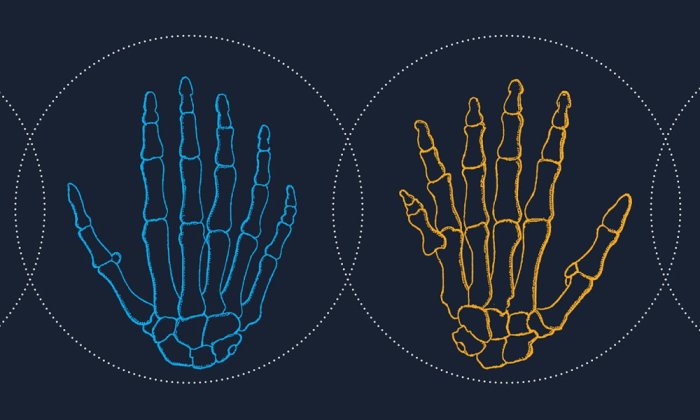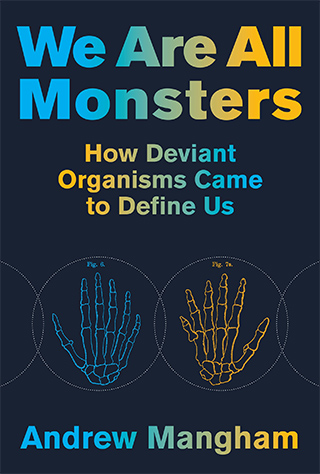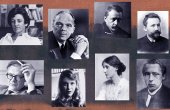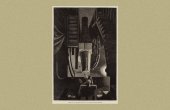How ‘Monsters’ Came to Define Us

“Was I then a monster, a blot upon the earth, from which all men fled and whom all men disowned?” In his new book, “We Are All Monsters,” Andrew Mangham offers a fresh interpretation of this question uttered by Frankenstein’s creature in an expansive exploration of how 19th-century literature and science recast the monster as vital to nature and to unlocking the knowledge of all life forms and processes.

In works ranging from Comte de Buffon’s investigations of humanity within natural history to Hugo de Vries’s revolutionary mutation theory, and from Mary Shelley’s artificial man to Lucas Malet’s fin-de-siècle notion of body difference, Mangham, a professor of Victorian Literature and Medical Humanities at the University of Reading, traces a persistent attempt to understand modern subjectivity through a range of biological and imaginary monsters. Far from being the wild inhabitants of a strange nether world, these “monsters,” once regarded as an aberration, emerge as a driving force in the evolution and development of life.
Mangham’s enlightened book shows us how innovative 19th-century thinkers challenged traditional notions of normality and provided a means of thinking about life in ways that check the reflexive tendency to categorize and divide. In doing so, it helps us face up to the reality that monstrosity defines and unites us. “At one fertile period in our history,” Mangham reminds us in the discussion that follows, “we were on the right track in seeing that we are all different and that nature not only tolerates such difference, it needs it, prefers it, and defends it.”
We asked Mangham to shed light on the origins and historical associations of the term “monster,” the connections between the literature and scientific work of the long 19th century, and the key milestones in the history of monster science.
The Editors: What are the origins of the word “monster”?
Andrew Mangham: The word monster has quite negative connotations today — often associated with the outlandish, the weird, the scary, and the abnormal. This is largely down to the fact that monster became a slang term, casually associated with the different, but it also has much to do with Hollywood’s popularization of a certain image of monstrosity.
In one important time in history, monster also meant creative, experimental, and ever-changing.
The term actually derives from the Latin monstrare (to show) and monere (to warn). In ancient times, it was believed that babies born with structural abnormalities foretold disasters like droughts or famines. Monstrare is also the root of the word demonstrate, showing how, historically, monstrosity was associated with knowing something or, perhaps more accurately, with the means of knowing it. It’s with this version of the monster that my book is most concerned. How do nature’s experiments with form demonstrate something crucial about the origins of life? In one important time in history, monster also meant creative, experimental, and ever-changing. Looking past the negative connotations of monstrosity invented in the last 150 or so years, I believe that we are given a powerful insight into the ways in which our ancestors revolutionized the science of life.
The Editors: The title of your book is a provocative statement aimed at challenging the compulsions we all have for differentiating the “normal” from the “abnormal.” It hints at the idea that if nature could speak, it would say there is no distinction between the “norm” and the “deviant.” Who were some of the scientists that first challenged traditional notions of normality?
AM: The science of monsters goes back at least as far as Aristotle and was legitimized, to a large extent, by Renaissance philosopher Francis Bacon who, like his Greek forebear, believed that to understand nature we need to have a sense of where and how it errs. While such ideas legitimized the notion that the exception proves the rule, and seemingly confirmed the monster as “other” or separate from the “norm,” they were also concerned with creating a natural history in which the monster was no supernatural sign or portent, but vital to the story of life.
But the true revolution arrived in the 18th century, when scientists like Louis Lémery suggested that singularities of form were reactions to the events experienced during the nine months of gestation. Crucially, scientists like Caspar Friedrich Wolff linked such ideas to the theory that fetal development is a radical alteration from a very simple form to a complex one (epigenesis). Together, these ideas paved the way for the knowledge of how abnormalities are caused by the natural laws of development that are common to all forms of life.
The Editors: Could you talk about the impact that Darwinism had on the development of monster science? This is an important part of the book.
AM: Darwinism is something of a black hole in monster science; it sucks in everything around it and gives the false impression that all orbits are defined by its gravitational pull. Also like a black hole, Darwinism acts on monster science through a powerful sort of vacuum, powerful enough to have a real effect on the things around it, but ultimately defined by its negative energy. By this I don’t mean that statements about the Darwinian Revolution have been overstated, or that Darwin made little contribution to the subject. On the contrary, Darwin often wrote about monstrosity, and his theories sparked a new interest in the subject among many of his contemporaries. But he did buck a trend sparked in the 18th century by seeing monstrosity as an anomalous one-off, a “sport of nature” — it was no part of the positive momentum of evolution though it was key to understanding the rules and patterns of descent.
Darwin was contradicted by many of his contemporaries who believed in the alternative theory of saltationism. Here, nature takes great leaps forward, often making structural changes in a single generational shift. Hence, I may differ markedly from my parents and from my species. This is a natural experiment — nature testing whether a new body part, or the removal of the same, will lead to a strength in the species. For Darwin, such changes would need thousands of years and multiple generations’ struggles to survive before they could come about. Monstrosity became the focal point of major disagreements with Darwin’s landmark theory. Yet, it is also true that later theories of mutation owed a great debt to his understanding of how heredity underpins the evolution of species. While it is important we read the so-called forerunners of Darwinism on their own terms, in their own contexts, we also find it difficult to discover any aspect of the science of monstrosity, post 1859, that does not engage with the keynotes of Darwin’s theory.
The Editors: What are a few other key milestones in the history of monster science?
AM: Charles Darwin was influenced by several major figures in monster science, including his Grandfather Erasmus Darwin. At the end of the 18th century and the beginning of the 19th, Erasmus suggested that the forms of nature are subject always to creative forces — forces capable of making changes to structure and ultimately contributing to the innate beauty of the natural world.
Another influence on Darwin was Étienne Geoffroy Saint Hilaire, author of the theory of arrested development. In the nine months of gestation, all vertebrate animals mutate from simple to complex; at each point in this process, the embryo matches the form of a lower species — hence humans pass through fish, amphibian, lower mammal, and primate forms. Structural singularities are “arrested developments,” results of the embryo’s development having stopped at a “lower” stage. This explains why some singularities like the so-called “hare lip” resemble the “normal” form of lower species.
To those natural historians we’ve been discussing, like Darwin, monstrosity demonstrated important facts about the laws of descent.
Later, the mutation theory of Hugo de Vries drew heavily on Darwin’s work to suggest “the existence of indiscriminate mutability” — the notion, in other words, that we are all mutating, or that we are all, in our unique ways, mutants. De Vries would later become central to the development of genetics as a science in the early years of the 20th century.
The Editors: Toward the end of the 19th century, the subject of monstrosity had grown to such an extent that the physician and obstetrician John William Ballantyne felt it necessary to start a specialist journal, Teratologia, that could act as “a medium for the […] gathering together, in the form of short and pithy abstract, of the many communications relating to the subjects which are constantly appearing in a widely scattered way in current medical and scientific journals and magazines.” Can you discuss the transformation of monstrosity from an object of curiosity and morbid fascination to an integral part of pathology and natural history? What ever happened to Teratologia?
AM: Teratologia ran for only a year or so. It wasn’t uncommon for new periodicals to fail in the 19th century — the literary and scientific worlds were inundated with weekly and monthly publications, each reliant upon significant sales and each backed, usually, by a publisher with a keen eye for profit. I suspect that Teratologia was too niche to find an enthusiastic audience. But this is not to say that monstrosity was a niche topic. As you suggest in the framing of your question, the subject had evolved from a subject of morbid curiosity to an integral part of pathology and natural history. In doing so, it became a crucial tool in every scientist’s methodology; to those natural historians we’ve been discussing, like Darwin, monstrosity demonstrated important facts about the laws of descent. What do we pass on to the next generation? What gets eliminated?
To medical professionals, structural differences demonstrated how bodies grow and operate. Ballantyne himself referred to cases where babies born without vital organs, such as heart and lungs, had reached full maturity in utero, thus proving how the fetus relies upon the heart and lungs of its mother to circulate blood and oxygen. In short, monsters became important phenomena to think with. As such, they became the subjects of science as well as superstition and folklore, but what is interesting about the 19th century is the way in which it often puts these two ideas of monstrosity together, as in the work of Charles Dickens, where morbid curiosity does battle with scientific observation.
The Editors: Charles Dickens had an obsession with unusual anatomies, you write, which matched the preoccupations of the period’s biologists. In fact, you dedicate a chapter to considering his early novel, “The Old Curiosity Shop.” What is significant about Dickens’s work in the context of monster studies?
AM: Dickens marks a significant turning point in the context of monster studies and nowhere is this clearer than in “The Old Curiosity Shop.” On the one hand, we have some old ideas of monstrosity working their way into the story. Characters like Daniel Quilp and Sally Brass are drawn out of the tradition of the freak show where difference was made a spectacle you could see for a penny. In this interpretation, the singular is a return to the old belief in the different as truly extraordinary and “other.”
However, the singular characters of “The Old Curiosity Shop” owe a great deal to the science books we know formed part of Dickens’s library. These characters react and adapt to environment in confirmation of Lamarckian theory; they represent similarities with animal forms, thus confirming Geoffroy’s notion of arrested development; they also thrive in the complex environments of Dickensian London, confirming the wider scientific claim that difference is an attempt to strengthen the individual and the species. I don’t think Dickens has a consistent stance on theories of difference — we see warring ideas at work in his novels: The freak show often does battle with the scientific ideas which, in general, offer a more open-minded understanding than the former. However, Dickens is a product of his age and his work offers an opportunity to see the evolution of ideas on monstrosity in media res. “The Old Curiosity Shop” is written on the cusp of changing impressions — midway between tradition and innovation, older forms of entertainment, and newer, more scientifically-influenced, ways of telling the stories of the different.
The Editors: You write that during this period, literature was another laboratory in which monstrosity was subjected to intense, inspired, and open-minded curiosity. What is the reason for comparing literary representations of human “monstrosities” with biomedical writings from the period?
AM: What we find in the long 19th century is the idea of monstrosity meandering its way through a wide range of texts, including the literary. My study doesn’t compare literature and science as much as show the ways in which monstrosity evolved as a topic because the writers of fiction and the practitioners of science had a unique relationship in which the methods of the one informed the theoretical interests of the other.
We need to avoid the trap of saying that literature “humanizes” the topic or makes it relatable.
Essentially, in both literature and science, we see a determination to tell the stories of monstrosity — to see how difference begins, plays out, and concludes. We need to avoid the trap of saying that literature “humanizes” the topic or makes it relatable. The briefest of acquaintances with the monster science of the period introduces us to the subject’s moral and ethical stakes. Instead, what I suggest is that any history of monster science which does not include some sense of how literature exploited and experimented with its key ideas tells us only half of the story.
The Editors: Mary Shelley’s “Frankenstein” was developed by real developments in monster science, right?
AM: Right. It’s difficult to see how Mary Shelley could have avoided the real developments in monster science. Her father, William Godwin, was connected to all the major figures of the Romantic period including Erasmus Darwin. Percy Shelley was a friend of surgeon William Lawrence who wrote a number of articles on monstrosity. There is good reason to believe that Mary Shelley knew of Comte de Buffon’s writings on natural history which were central to the development of ideas of species mutation. Percy had certainly read Buffon before “Frankenstein” and we know that he had a hand — a very heavy hand — in editing the novel prior to its publication. In any case, “Frankenstein” makes use of many of the fundamental philosophical questions raised by the natural history of monstrosity — questions that were circulating freely at the time, largely thanks to the science of men like Buffon and Lawrence. Evidence of Mary Shelley’s interest in the theme can be found in Frankenstein’s creature’s determination to work out who, or what, he is — his interrogation of the ways his difference marks him as both an outsider but also, crucially, a sort of exemplar of the human species, with the workings of his anatomy visible just beneath his translucent skin.
The Editors: Is there anything else you’d like readers to know about the book or any final message you’d like to convey?
AM: Only the key messages of my book’s coda, in which I seek to understand how knowledge of the past, particularly the interdisciplinary exchanges between literature and science, informs our understanding of our own battles with discrimination, intolerances of difference, and reflex determinations to divide “us” from “them,” the “normal” from the “abnormal,” the accepted from the unaccepted.
The long 19th century was a crucial time in our development of liberal, human, and ethical understandings of difference. While it is true that the period excelled in separating what was perceived to be the “legitimate” from the “illegitimate,” it is also true that it developed a vocabulary and a methodology for challenging such assumptions through the image of monstrosity. At one fertile period in our history, we were on the right track in seeing that we are all different and that nature not only tolerates such difference, it needs it, prefers it, and defends it.
One of our biggest challenges is a willful determination among our governments and lawmakers to ignore the lessons of the past. We see the cost of this kind of ignorance in recent, conservative reactions to the rights of trans people. It may seem a bizarre argument that the long 19th century gave us the means of developing a more accepting attitude to trans individuals, but if we take the lessons of some of the science and literature explored in my book to heart, we will be encouraged to acknowledge gender, or queerness, as a large spectrum on which we all find our place. At the very least, we would see that the black-and-white labels we have put so much store in through the years, and which are currently defended by even the most liberal of parties, are arbitrary at best and injurious, frequently, in practice.



